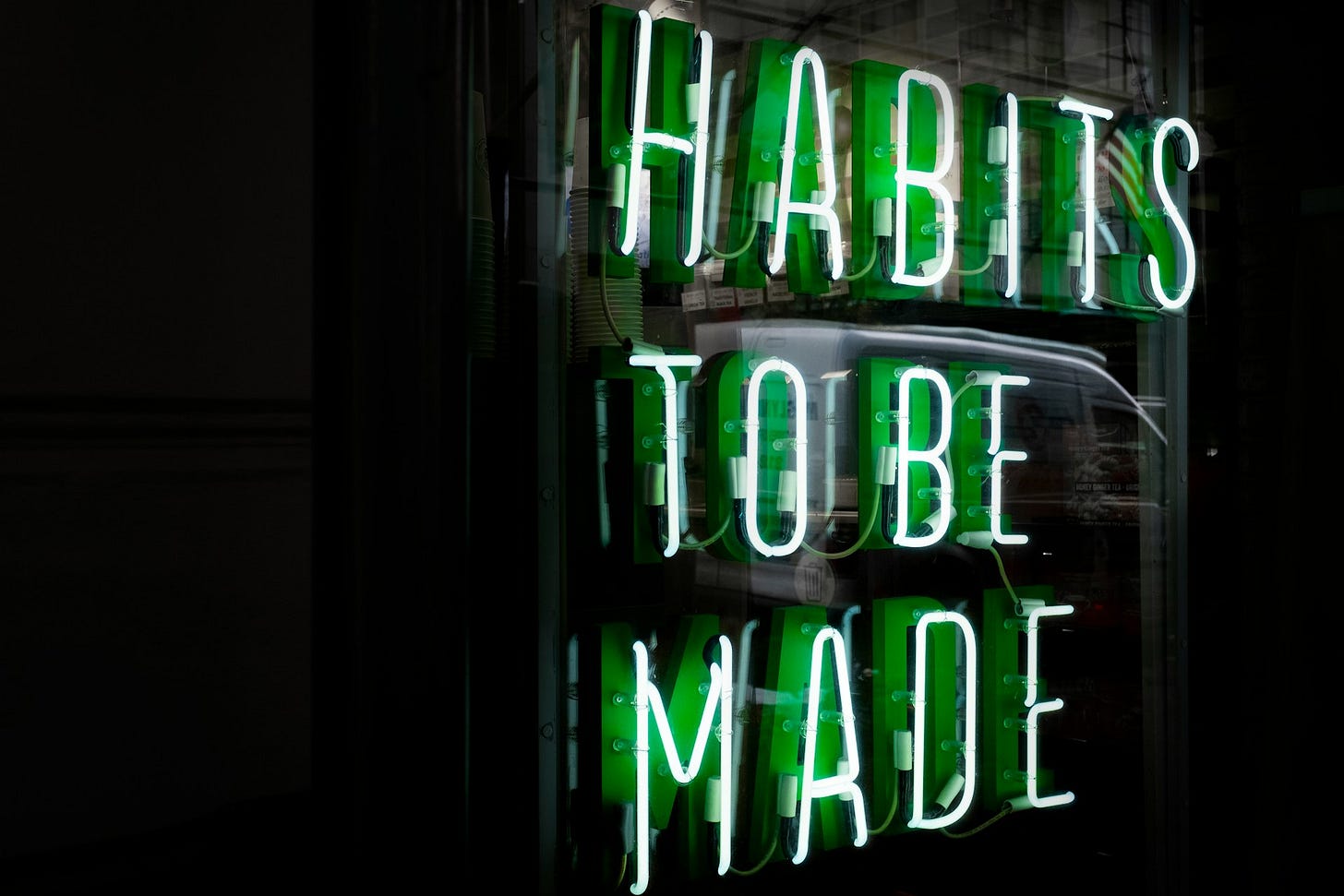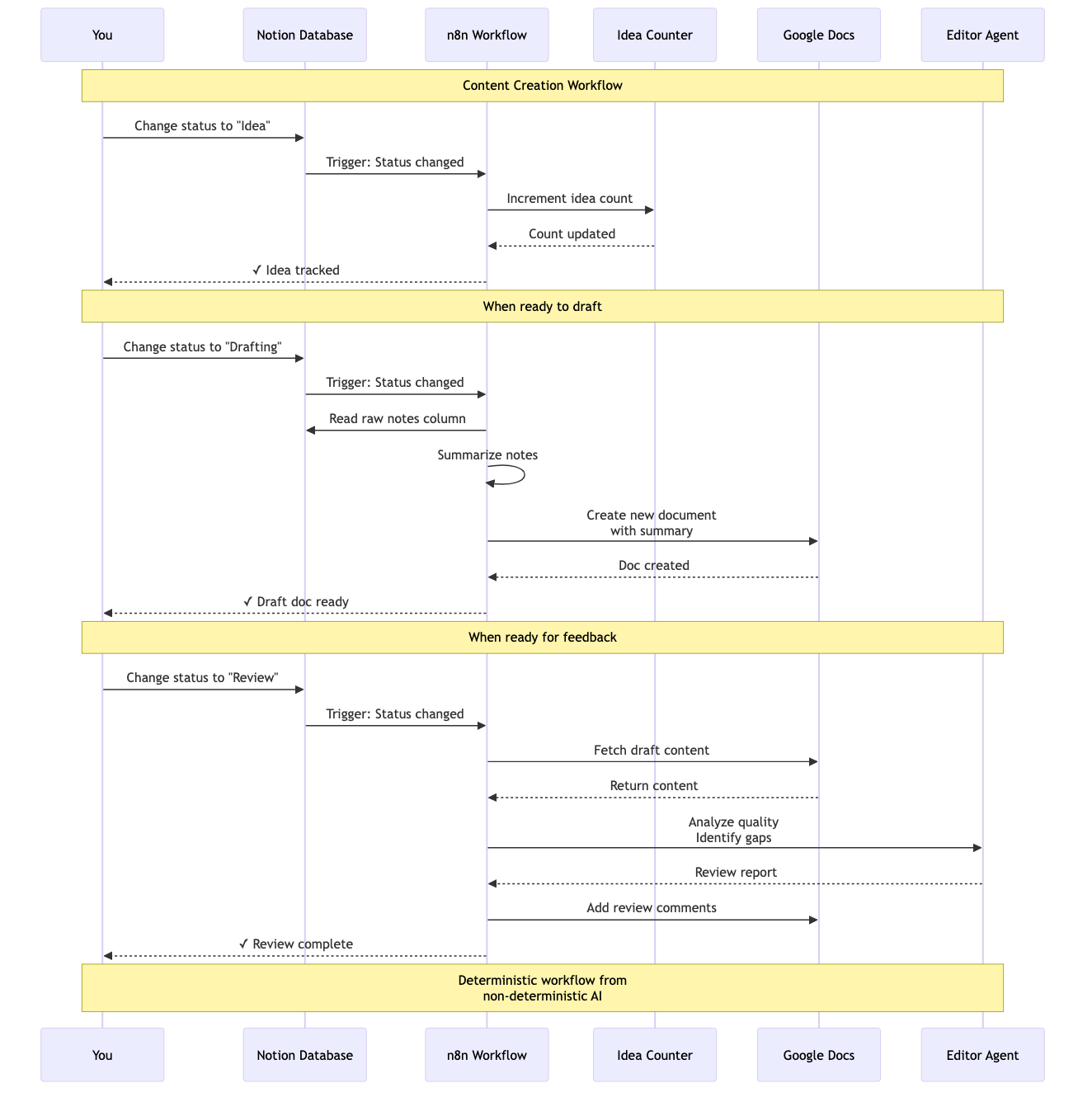Your workflow is your new codebase
How do you build a sustainable advantage with AI tools? Make your workflows repeatable. Read: "Everything Starts Out Looking Like a Toy" #273

Hi, I’m Greg 👋! I write weekly product essays, including system “handshakes”, the expectations for workflow, and the jobs to be done for data. What is Data Operations? was the first post in the series.
This week’s toy: a clever combination of NFC and ingenuity to introduce kids to new musical options. There’s no tactile feedback to picking a random track on Spotify, so why not create an analog version? It’s not quite the same thing as flipping through records or stacking CDs, but much better than “find me a good song.” Edition 273 of this newsletter is here - it’s October 20, 2025.
Thanks for reading! Let me know if there’s a topic you’d like me to cover.
The Big Idea
A short long-form essay about data things
⚙️ Your workflow is your new codebase

One of the biggest “tells” of AI use is the overabundance of elipsis (”...”), em-dash (–), and groups of three comparisons. I wrote this myself but you’d be forgiven if you immediately jumped to thinking that it sounded like an AI-created sentence.
And that’s the point. If you’re working in Applied AI these days, you need to do more than simply generate summaries from meetings with ChatGPT or re-writing emails with Claude to have better tone. The real opportunity to apply AI - creating a moat where there wasn’t one before - is to create workflows that amplify the best parts of what you do and don’t make you sound like the median AI output.
Try it out yourself. Take the same prompt that you might use to solve a problem and test the output on Gemini, ChatGPT, and Claude. Or, if you like using the command line, try it out on Codex, Claude Code, and Cursor. You will end up with slightly different median output to your question depending upon how the model is trained, the inputs you gave it, and the context in your project.
You’re getting a non-deterministic answer, which is a thing AI does well. It’s using math to show you a likely answer but not necessarily the same one every time.
That’s a problem if you’re trying to use AI to build systems of repeatable work. You need to create workflows where AI agents wake up, check status, perform work, and go back to sleep. These are systems that are supposed to run while you focus on higher-order problems.
Build a factory to build factories
To succeed, you need to build a factory of AI tools that build AI-enabled workflows in the style that you would do that work rather than just building a median tool.
I’m not suggesting that you create AI slop by letting agents do the thinking for you.
I’m suggesting you treat your own workflow like a platform software team would:
Create building blocks that can be recombined. Think of your workflow as composed of discrete, reusable components. Each tool should do one thing well and be composable with other tools.
Compose these using agents and CLIs. String together your building blocks programmatically. Command-line interfaces and AI agents become the orchestration layer that connects your components.
Build “recipes” whenever you define a new workflow. When you figure out a useful pattern, codify it. This creates both documentation and a template for future work.
This forces some sameness and templating. Yes, this sounds boring. But standardization is what makes complex systems manageable. It’s the difference between artisanal code and industrial-strength automation.
And gives you the vocabulary to build new things. Once you have a library of patterns, you can describe new workflows in terms of existing components. This accelerates everything.
Let’s take a look at a content creation workflow to get an idea for how this can work.
Using AI tools to build a content workflow
Here are the basic ideas for building a content workflow:
Break down tasks into discrete steps. Take that complex job and decompose it into clear, testable units. Each step should have a defined input and output.
Build workflows that connect those steps. Create the plumbing that passes data between steps. Think data pipelines, but for knowledge work.
Arrange the decision points to provide deterministic answers to non-deterministic workflows. AI is probabilistic, but your systems don’t have to be chaotic. Design decision points that convert fuzzy AI outputs into clear, actionable results.
Create a method to evaluate the decisions and alert when they differ. Build feedback loops. Monitor when outputs change. Set up alerts for unexpected variations. This is your observability layer.
Hire agents to do this work. Once the workflow is defined, hand it off to an AI agent. Let it run while you focus on higher-level problems.
And here is how it might look when you actually ask the agent to do the work:
“I’d like to create an n8n workflow that tracks the progress of an idea I’m having for an essay using Notion. When I change the status of the row to “Idea”, I want you to increment the count of the ideas I’ve generated.
When the status of the row changes to “Drafting”, please summarize the raw notes column and create a Google doc where I can review the results and start writing.
When I change the status to “Review”, please use the Google Gemini node and my editor agent to tell me whether the piece is any good and where it needs work to be a better essay.”
The first time you do this, it’s going to feel weird. You won’t have the right cadence or tools to get this done.
And as you make incremental improvements it might be hard to document or to prove to someone else that it’s ultimately a process that will help you repeat and scale the work that you’re doing. (And so other people could potentially do the same thing.)
Wait, am I outsourcing my job?
Not exactly. It’s more like acting like a Product Manager for your own work.
The core insight is this: get comfortable defining tasks for agents that can wake up, check a status, perform a job, and then go back to sleep.
Once you master this pattern, you’ll be able to apply it to a massive range of work-related challenges. Think about automating data cleaning, report generation, or even initial drafts of presentations.
Imagine a collection of tools, each designed for a specific purpose, that you can string together to handle complex tasks:
Summarize a document
Create a draft for a weekly Slack update
Create a graphic to illustrate a slide or a key point in a document
Build a newsletter to summarize a set of data
Start simple. A script that monitors a Slack channel for customer questions and drafts responses. A tool that reads your meeting notes and automatically creates follow-up tasks. A system that scans industry news and flags relevant articles with a summary of why they matter to your project.
These aren’t sophisticated tasks individually. But together, they form the infrastructure for AI-driven automation. They’re the building blocks you’ll recombine into more complex workflows.
Start imperfect, iterate fast
Your agents won’t be great on day one. That’s not just fine, it’s expected.
Your first attempt might only work 60% of the time. Your classifications might be inconsistent. Your summaries might miss key points. But here’s the thing: unlike traditional software, AI systems improve dramatically with iteration.
Build evaluation frameworks from day one. Create test cases. Track success rates. When your agent makes a mistake, capture that example and use it to improve the prompt or add guardrails.
This is the compounding advantage of treating your workflow as code: every improvement builds on the last one. Every pattern you establish becomes a foundation for the next tool. A 60% success rate becomes 75%, then 85%, then 95%. Things will improve faster than you’d expect.
The meta-skill for the AI era
Here’s what most people miss: by building AI-powered workflows for your own work, you’re not just being more productive. You’re developing the core skill that will define the next decade of software development.
You’re learning how to:
Decompose fuzzy problems into structured steps
Convert non-deterministic AI outputs into reliable systems
Build observability into probabilistic processes
Orchestrate multiple AI agents toward a goal
These are the patterns that will define the next generation of enterprise software. The difference is you’re learning them by solving real problems in your own workflow, not building demos.
Don’t try to build everything at once.
Pick one repetitive task you do weekly. Something annoying but necessary—maybe it’s summarizing customer feedback, or generating status reports, or organizing research notes.
Build one agent to handle it. Not perfectly. Just usefully.
Then build the next one. And the next. Let each one teach you what works.
What’s the takeaway? Your workflow is your new codebase. Treat it that way, and you’ll be building the infrastructure for AI-native work before most people realize it’s possible.
Links for Reading and Sharing
These are links that caught my 👀
1/ Railways and time tables - Sometimes, the innovations piloted by a single industry have wide-ranging effects. One such idea is the time table. It was much different before the advent of the train because, well, ships don’t arrive as often. The point here is that system observability drives data which drives behavior. If you want to start with first principles, think about what it requires for “the trains to run on time.”
2/ Time slicing vs. time blocking - I left my phone at home yesterday and was without it for three hours. The experience was quite a bit different from the everyday time slicing that happens when you have anything possible in the supercomputer in your pocket. Was it better to leave the phone behind? Yes. But am I saying that simply because it was better or because I didn’t break up the time aimlessly? What is better: blocking your time to focus on a single thing, and then holding yourself accountable.
3/ YouTube’s success - It has weird UI, creates shows about nothing, and is a wild success. Why is YouTube so successful? (Hint: it might be product-market fit.)
What to do next
Hit reply if you’ve got links to share, data stories, or want to say hello.
The next big thing always starts out being dismissed as a “toy.” - Chris Dixon




